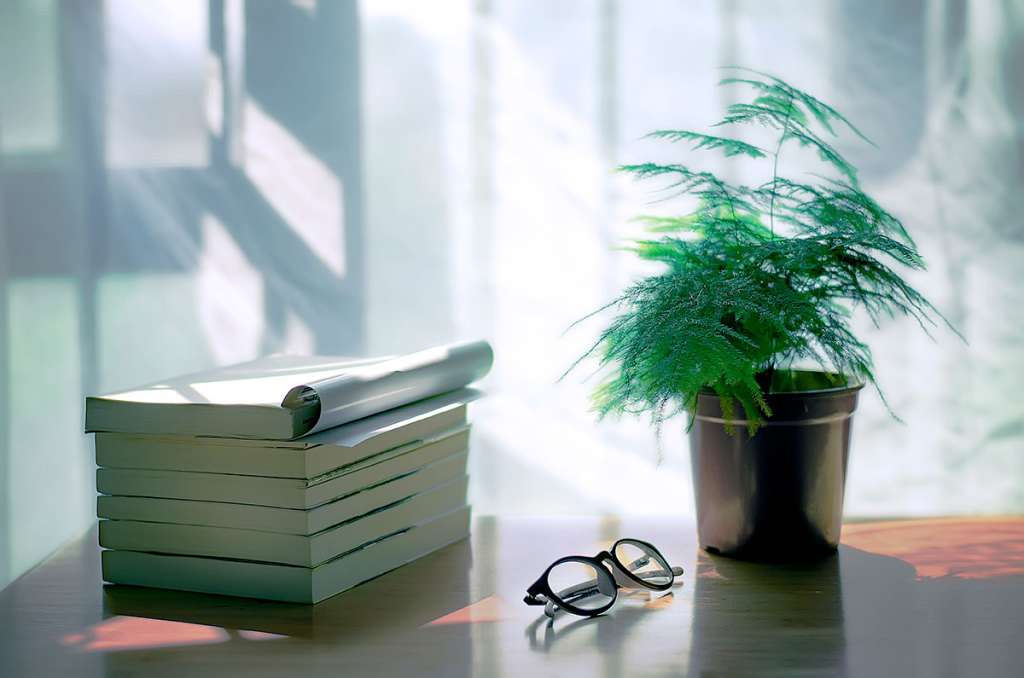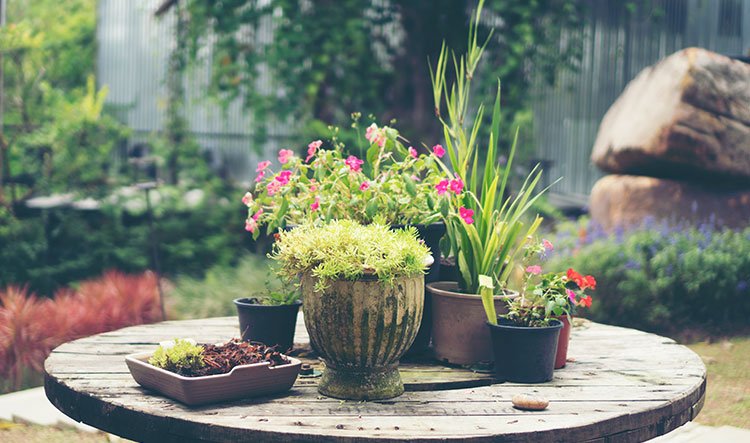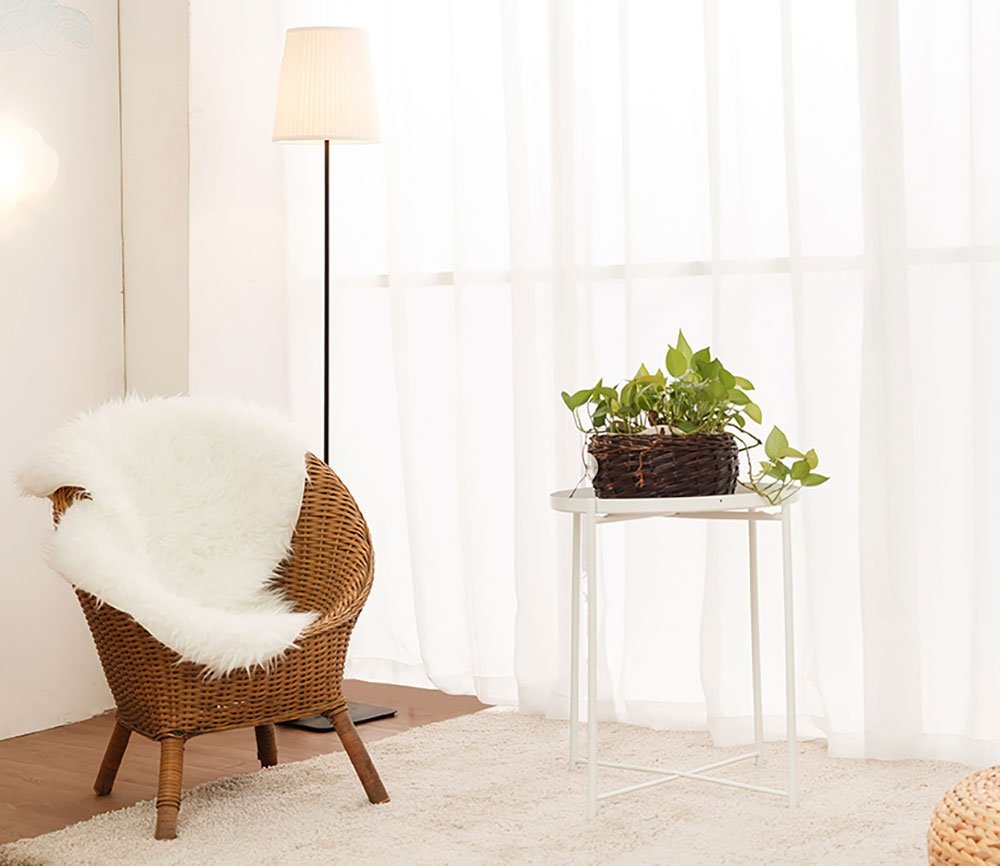Do you remember the comfortable feeling brought by the new green shoots in parks and streets in early spring? Such a feeling will be around you all the seasons if some green plants are taken home.

The most immediate benefit of green plants for your soul is to create a chance to access nature. Nowadays, most would like to stay at home and surf the internet for a long time. Bringing outdoor plants indoors has a positive effect on our health, especially when there is no direct access to the garden or a lack of outdoor landscapes, indoor greenery are even more significant. Also, green plants can create oxygen through photosynthesis, which never is superfluous in your home.
Honestly, the specific benefits of each plant for health still need to be further studied. However, the fundamental research of NASA and some internationally renowned universities shows that plants are like a “sponge” that can absorb pollutants. That is, plants can absorb carbon dioxide in the air and volatile organic compounds (VOC) released from artificial products such as coatings, carpets, furniture and cleaning supplies.
VOC is generally believed to be the source of Sick Building Syndrome (SBS, usually the discomfort caused by pollutants or poor ventilation in the new buildings), a disease of modern office workers with the symptoms of headache, dizziness, easy fatigue, skin allergy, eye, nose and throat discomfort, and even asthma.
Furthermore, green plants can bring many benefits to your mental health. Also, it is quite healing to take good care of a plant and witness its growth. Similarly, among those studies on caring for plants in the workplace, researchers have shown that plants can help relieve negativity, anxiety, depression and mental stress.Actually, never mind which green plant has the above advantages, and just choose the one you favor and fall in love with at first sight. Then, you will be glad every moment at the glance of it. In short, green plants can not only decorate your home but also delight your mood.

Air Purification
According to NASA, plants are the life support system of nature. In the “Clean Air Study” led by NASA in the 1980s, it was found that the following plants are effective at filtering toxic and polluting substances from the air.
* Aglaonema modestum, a tough plant with lush leaves and excellent drought resistance that is habituated to mild sun exposure and shade. It can be placed with ornamental foliage plants with different color levels together.
* Anthurium scherzerianum, a kind of flower with a long flowering period that can be easy to plant, not affected for a moment neglect and habituated to sufficient but indirect sunlight.
* Chlorophytum comosum, a plant, as long as there is good light, that can grow well by itself.
* Janet Craig, a species of Dracaena fragrans with luxuriant foliage and branches that is tolerant and will not be affected under insufficient sunlight or water.
* Epipremnum aureum, a great vertical hanging plant that can be habituated to sufficient or mild sunlight and an arid environment.
* Ficus benjamina, a plant that is good at purifying toxic substances, and can grow thickly under proper care. Note: It is not suggested to move or dry it once it is placed under good sunlight. Other Ficus plants, such as Ficus pandurata and rubber tree, are also good choices for purifying the air.
* Phalaenopsis aphrodite, probably the easiest variety of orchids to grow and cultivate, is not only beautiful but also not too expensive. It had better be placed in a well-lit place, soaked on the roots every week or watered on the roots every day.
* Sansevieria trifasciata, as “durable” as your old leather boots! It will be fine even if it is placed in a dark corner and the soil dries out between watering. It is one of the few plants that releases oxygen at night.
* Spathiphyllum kochii, a plant with lush leaves, unique white flowers, and strong adaptability to the environment. Even if the soil is dry, it can be revived by pouring enough water. It can be placed on the table under mild sunlight.
* Zamioculcas zamiifolia, also known as money tree with high adaptability. It can grow well in bright or dim environments, and it doesn’t matter if the composting soil dries out between watering.
Tip: Indoor green plants may cause allergies
* According to the survey by the National Health Service (NHS), one in five in the UK is allergic to pollen. The good news is that common green plants rarely release pollen spores, so they won’t cause allergies. However, if you are already allergic to pollen, you may also feel uncomfortable with other allergens. What needs your attention is that Ficus plants, especially Ficus benjamina, whose leaves will exude latex-like substances, which is easy to cause skin allergies.
* Many people actually believe that plants are very friendly to those allergic. The purification function of plants can filter pollutants and pollen spores in the air, and leaves can also absorb dust in the air.
* Remember to wipe the leaves of plants regularly to avoid dust deposits on plants that may cause allergies. Do not overwater. Too wet composting soil may produce mold, which is also a potential allergic source.




